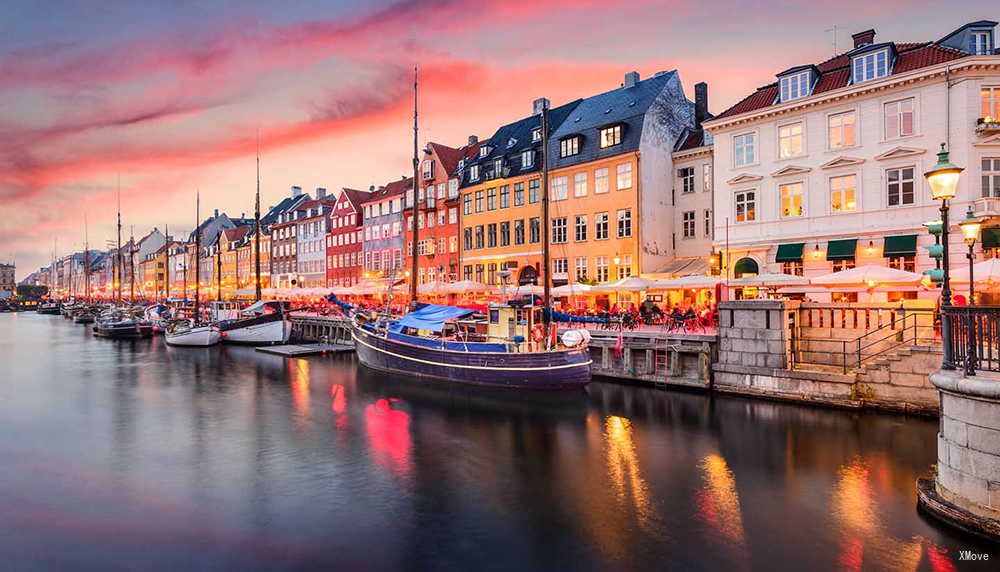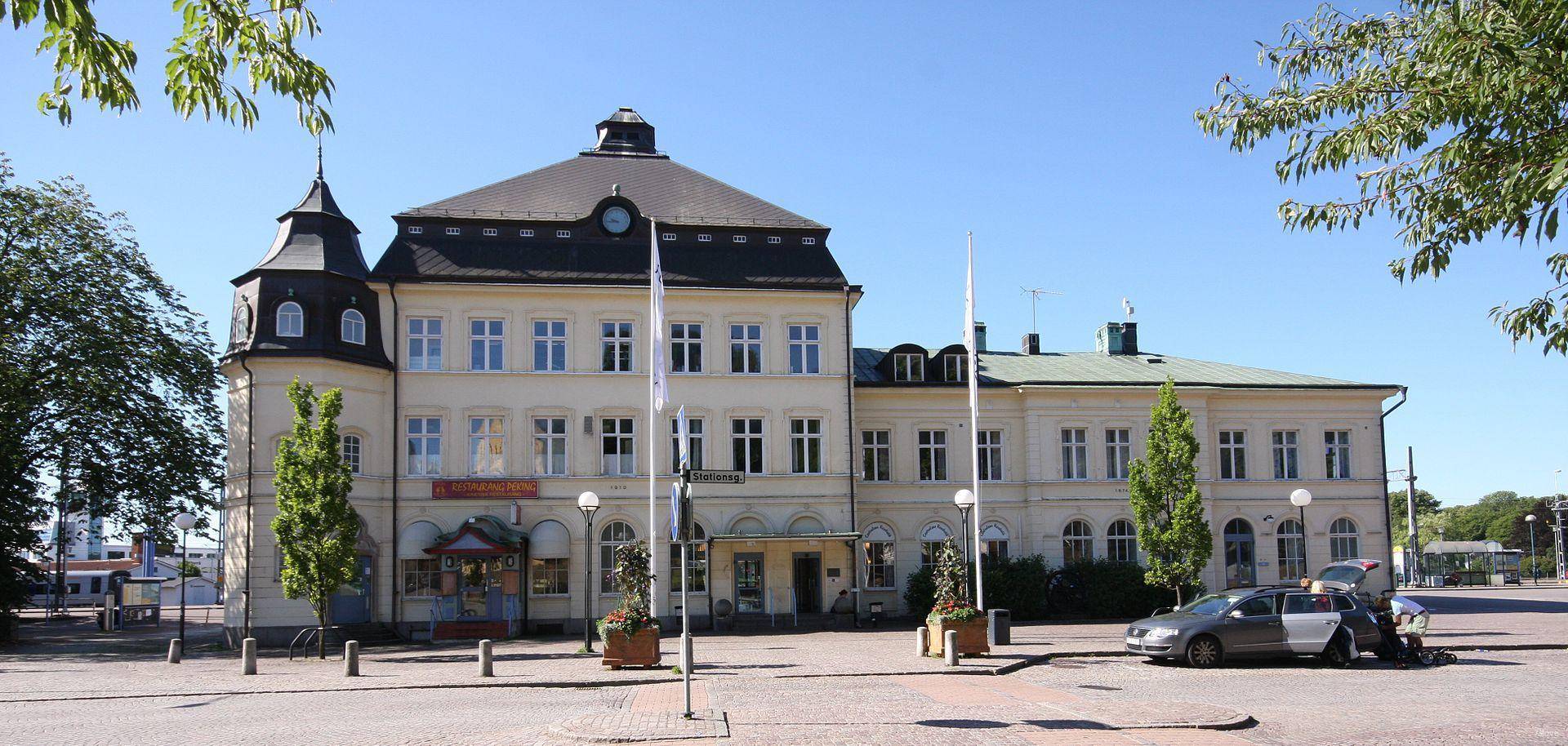Kalmar Central to Copenhagen: Trains, Buses, Fares, Today's Connections, Routes, Duration, Types of Trains, Station Guides, Tips, Journey
Sweden Train Tickets
Train schedule Kalmar Central(Kalmar C) to Copenhagen(Koebenhavn)
Popular train routes departing from Kalmar Central(Kalmar C)
* Lunden
* Ronneby Station
* Emmaboda Station(Emmaboda)
* Fagersta Central(Fagersta C)
* Karlshamn Station(Karlshamn)
* Borlänge Central(Borlänge C)
* Sundsvall Central(Sundsvall C)
Popular train routes arriving in Kalmar Central(Kalmar C)
* Kristianstad Central(Kristianstad C)
* Nyköping Central(Nyköping C)
* Joenkoeping Central(Jönköping C)
* Stroemstad Station(Strömstad)
* Köping Station
* Kristinehamn Station(Kristinehamn)
* Karlskrona Central(Karlskrona C)
Popular train routes departing from Copenhagen(Koebenhavn)
* Luebeck Hbf(Lübeck Hbf)
* Berlin Central Station(Berlin Hbf)
* Frankfurt Central(Frankfurt(Main)Hbf)
* Rendsburg
* Innsbruck Central(Innsbruck Hbf)
* Cottbus(Cottbus Hbf)
* Stuttgart Central(Stuttgart Hbf)
Popular train routes arriving in Copenhagen(Koebenhavn)

Kalmar (, also US: , Swedish: [ˈkalmar] ) is a city in the southeast of Sweden, situated by the Baltic Sea. It had 36,392 inhabitants in 2010 and is the seat of Kalmar Municipality. It is also the capital of Kalmar County, which comprises 12 municipalities with a total of 236,399 inhabitants (2015). From the thirteenth to the seventeenth centuries, Kalmar was one of Sweden's most important cities. Between 1602 and 1913 it was the episcopal see of Kalmar Diocese, with a bishop, and the Kalmar Cathedral from 1702 is still a fine example of classicistic architecture. It became a fortified city, with the Kalmar Castle as the center. After the Treaty of Roskilde in 1658, Kalmar's importance diminished, until the industry sector was initiated in the 19th century. The city is home to parts of Linnaeus University. Kalmar is adjacent to the main route to the island of Öland over the Öland Bridge.
Kalmar - Guide, Attractions, Tours, Sightseeings | Train from/to Kalmar | Popular RoutesCopenhagen (Danish: København [kʰøpm̩ˈhaʊ̯ˀn] ) is the capital and most populous city of Denmark. As of July 2018, the city has a population of 777,218 (616,098 in Copenhagen Municipality, 103,914 in Frederiksberg Municipality, 43,005 in Tårnby Municipality, and 14,201 in Dragør Municipality). It forms the core of the wider urban area of Copenhagen (population 1,320,629) and the Copenhagen metropolitan area (population 2,057,737). Copenhagen is situated on the eastern coast of the island of Zealand; another small portion of the city is located on Amager, and it is separated from Malmö, Sweden, by the strait of Øresund. The Øresund Bridge connects the two cities by rail and road. Originally a Viking fishing village established in the 10th century in the vicinity of what is now Gammel Strand, Copenhagen became the capital of Denmark in the early 15th century. Beginning in the 17th century it consolidated its position as a regional centre of power with its institutions, defences and armed forces. After a plague outbreak and fire in the 18th century, the city underwent a period of redevelopment. This included construction of the prestigious district of Frederiksstaden and founding of such cultural institutions as the Royal Theatre and the Royal Academy of Fine Arts. After further disasters in the early 19th century when Horatio Nelson attacked the Dano-Norwegian fleet and bombarded the city, rebuilding during the Danish Golden Age brought a Neoclassical look to Copenhagen's architecture. Later, following the Second World War, the Finger Plan fostered the development of housing and businesses along the five urban railway routes stretching out from the city centre. Since the turn of the 21st century, Copenhagen has seen strong urban and cultural development, facilitated by investment in its institutions and infrastructure. The city is the cultural, economic and governmental centre of Denmark; it is one of the major financial centres of Northern Europe with the Copenhagen Stock Exchange. Copenhagen's economy has seen rapid developments in the service sector, especially through initiatives in information technology, pharmaceuticals and clean technology. Since the completion of the Øresund Bridge, Copenhagen has become increasingly integrated with the Swedish province of Scania and its largest city, Malmö, forming the Øresund Region. With a number of bridges connecting the various districts, the cityscape is characterised by parks, promenades and waterfronts. Copenhagen's landmarks such as Tivoli Gardens, The Little Mermaid statue, the Amalienborg and Christiansborg palaces, Rosenborg Castle Gardens, Frederik's Church, and many museums, restaurants and nightclubs are significant tourist attractions. The largest lake of Denmark, Arresø, lies around 27 miles (43 kilometers) northwest of the City Hall Square. Copenhagen is home to the University of Copenhagen, the Technical University of Denmark, Copenhagen Business School and the IT University of Copenhagen. The University of Copenhagen, founded in 1479, is the oldest university in Denmark. Copenhagen is home to the FC København and Brøndby football clubs. The annual Copenhagen Marathon was established in 1980. Copenhagen is one of the most bicycle-friendly cities in the world. The Copenhagen Metro launched in 2002 serves central Copenhagen. The Copenhagen Metro is scheduled to expand radically with the opening of the City-ring line during fall 2019, the new line will connect all inner boroughs of the city by metro, including The Central Station, and will open up 17 new stations for Copenhageners. The new metro line is a part of the city's strategy to transform mobility towards sustainable modes of transport such as public transport and cycling as opposed to automobility. Additionally the Copenhagen S-train, the Lokaltog (private railway) and the Coast Line network serves and connects central Copenhagen to outlying boroughs. The Copenhagen-Ringsted Line will relieve traffic congestion in the corridor between Roskilde and Copenhagen. Serving roughly two million passengers a month, Copenhagen Airport, Kastrup, is the busiest airport in the Nordic countries.
Copenhagen - Guide, Attractions, Tours, Sightseeings | Train from/to Copenhagen | Popular Routes
Sweden Train Tickets
Hot Journeys
* Florence -> Rome(Roma)
* Kaohsiung(高雄) -> Taipei(台北)
* Dusseldorf(Düsseldorf) -> Frankfurt
* Brig -> Andermatt
* Rovaniemi(Rovaniemi) -> Helsinki(Helsinki)
* Avignon -> Paris
* La Spezia(La Spezia) -> Manarola
* Frankfurt -> Berlin(Berlin)
* Lucerne(Luzern) -> Arth
* Naples -> Rome(Roma)
* Berlin(Berlin) -> Frankfurt
* London(London) -> Edinburg
* Beijing(北京) -> Shanghai(上海)
* London(London) -> Paris
* Bratislava(Bratislava) -> Warsaw(Warszawa)
* Barcelona -> Madrid(Madrid)
* Munich(Müchen) -> Berlin(Berlin)
* Helsinki(Helsinki) -> Rovaniemi(Rovaniemi)





